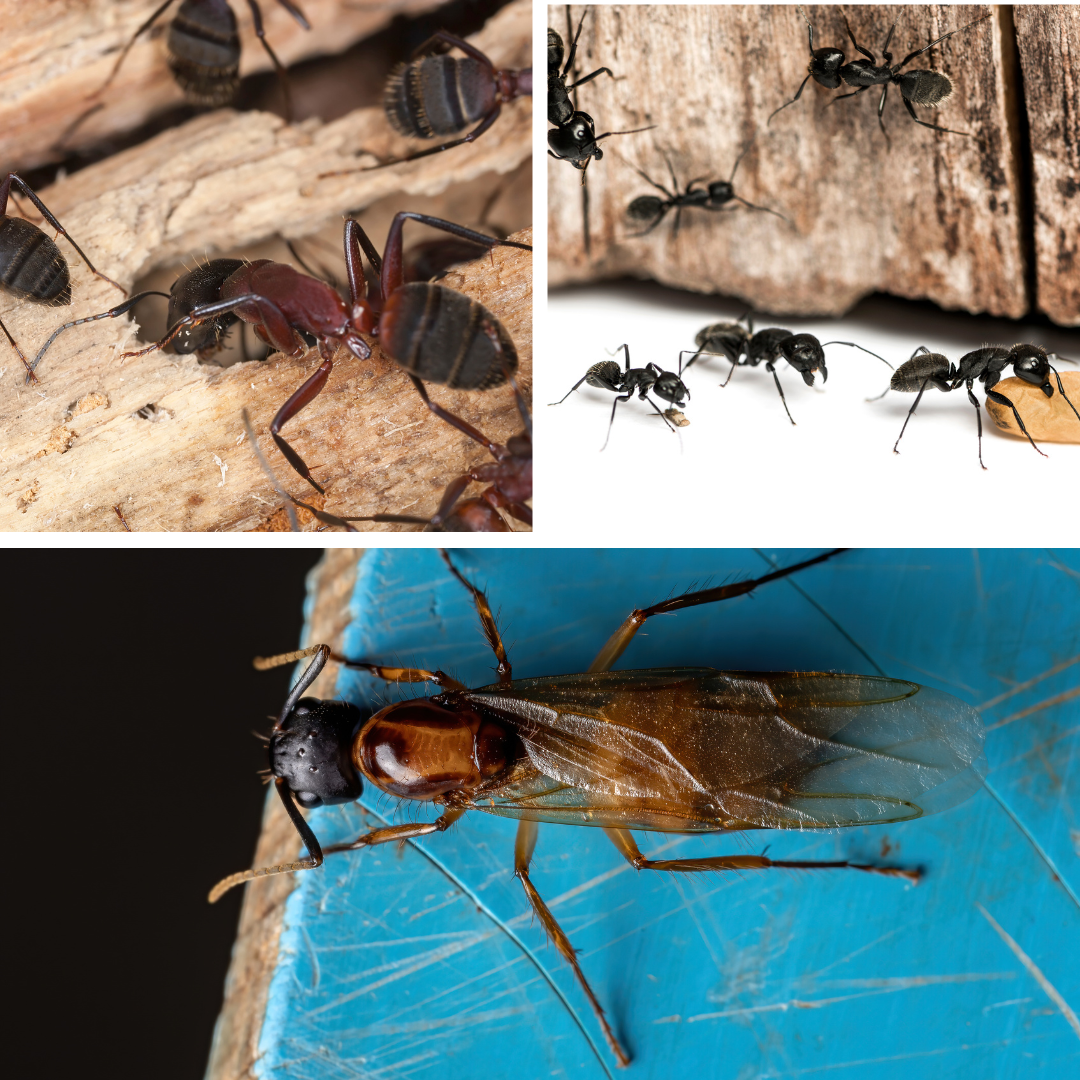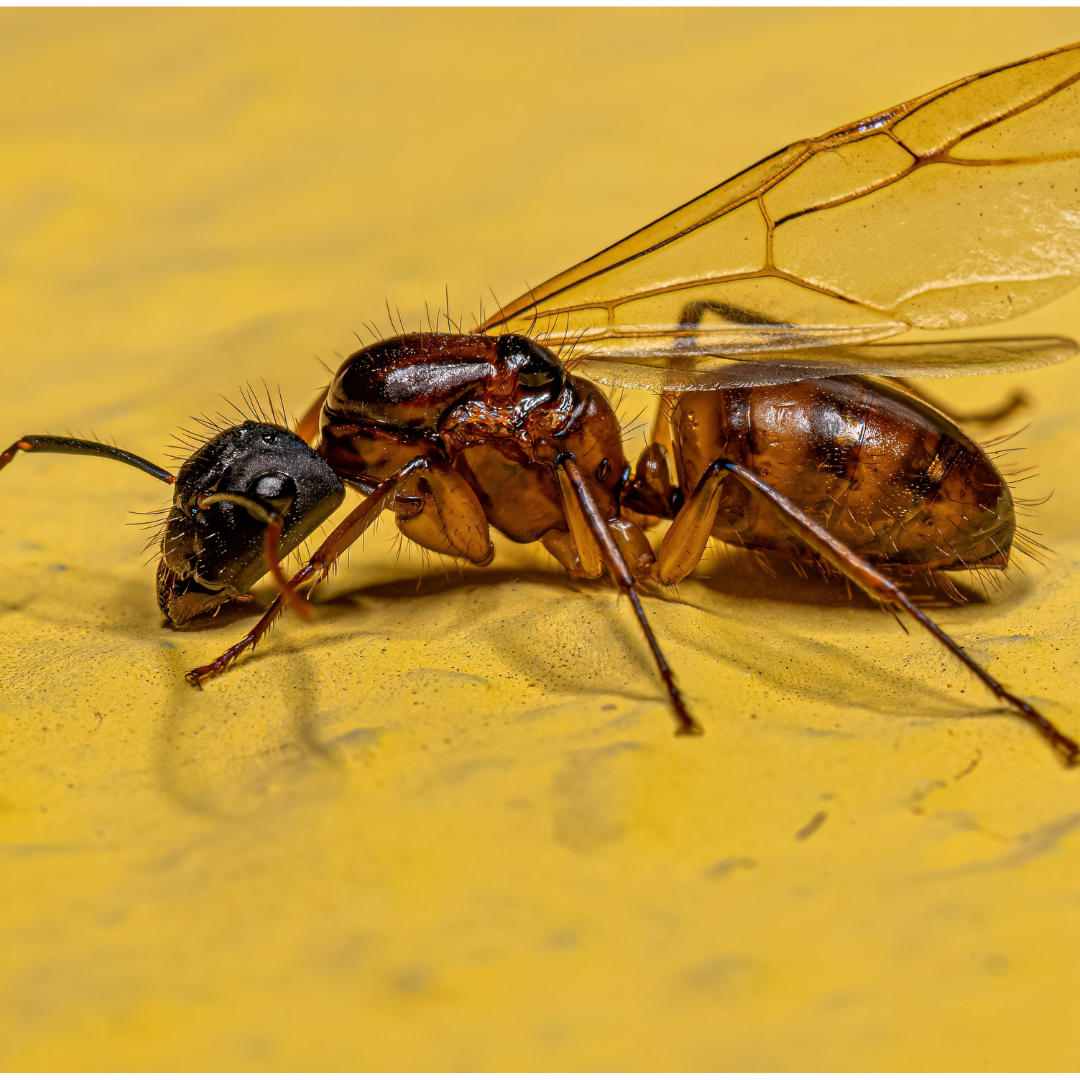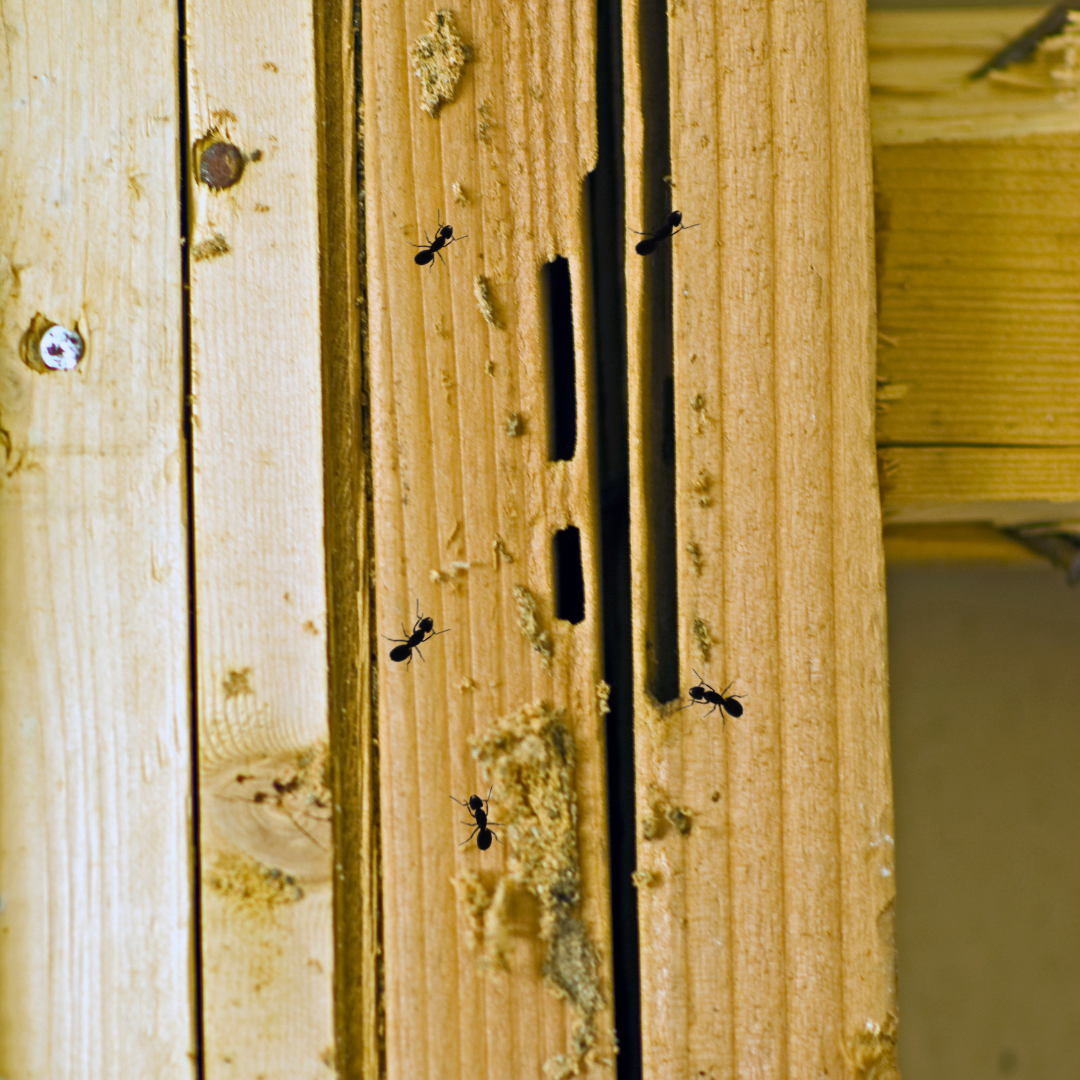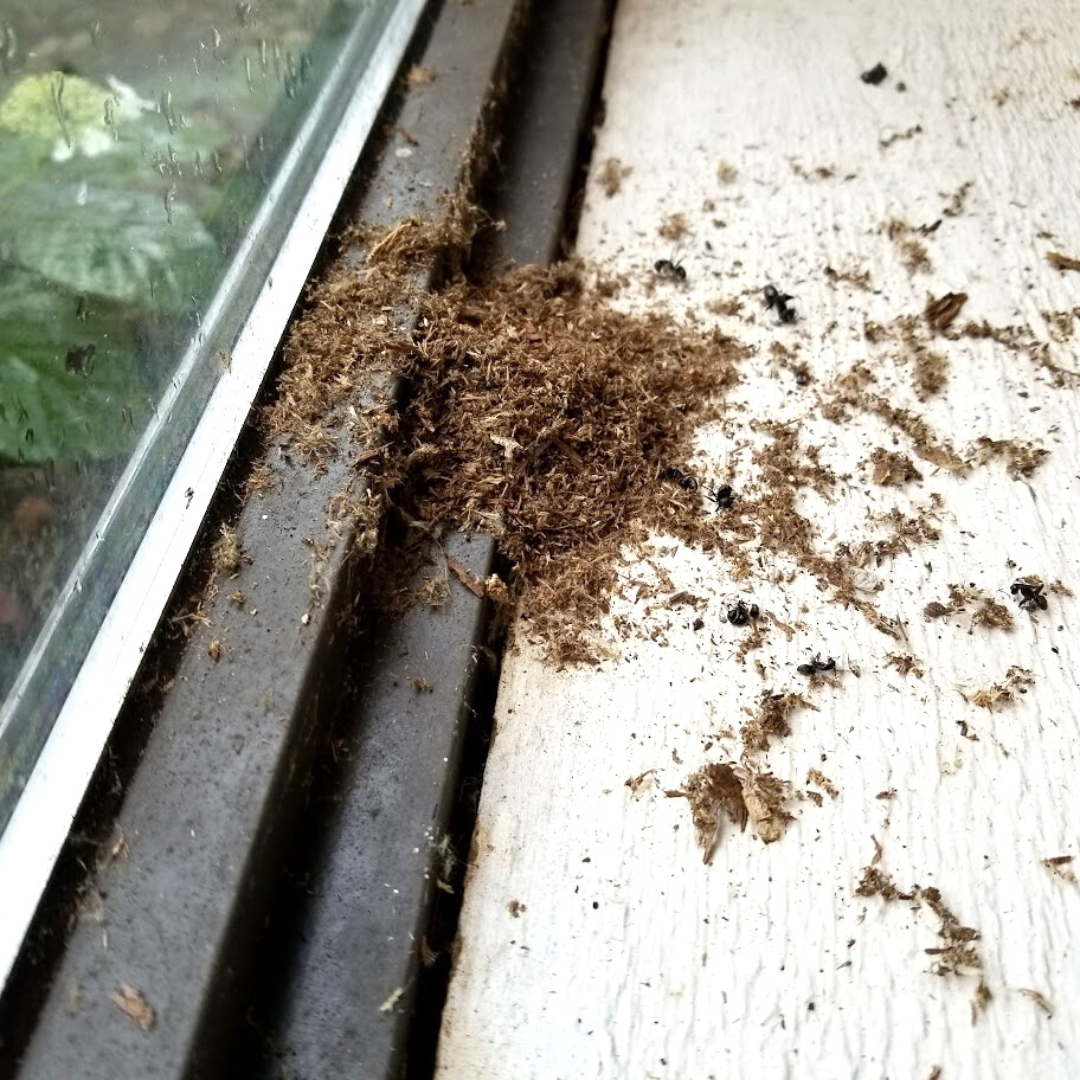BOGO Pest Control Can Get Rid of Carpenter Ants Inside your Home
Seeing carpenter ants can cause many homeowners to panic. But the damage they cause is less than the water damage and rot inside or outside the home that is attracting the ants to infest that area.
Call Us Today! 952-404-BOGO (2646)
Share This Page!
Carpenter Ant Identification

Appearance
Carpenter ants can vary in size and color and sometimes even have wings. Most ants that you see inside will vary in color between reddish-black or all-black. A way to tell them apart from other ants is by looking at their antennas that are bent in the middle (elbowed antennae). There are 3 different kinds of carpenter ants; workers, males, and females. The females are the largest second to the males. Both females and males can have wings. The workers don’t have wings and are the smallest.
Length:
Worker: 0.35-0.5 inches
Male: 0.5-0.75 inches
Female: 0.75-1.0 inches

Behavior
Carpenter ants construct two different types of nests. One is called a satellite nest and the other is a parent nest. The parent nest is most commonly found outside. They can be found inside trees, decaying tree stumps, logs, or tree roots. This is where the female or queen ant is located. The parent nest is located in a wooden structure with more than 15% moisture content. This can be caused by leaks, rain, or condensation. Each parent nest can have multiple satellite nests where workers will bring the female’s brood to a dryer location which helps increase larval and pupal development. Carpenter ants are omnivorous and eat a large variety of different foods. Including; plants, insects, plant juices, fruits, sugar, grease, etc. They DO NOT EAT WOOD! Worker ants get their energy from carbohydrates while the larva requires protein to grow. In the winter ants no longer work on growing the nests. This means that in the winter ants don’t search for protein-rich foods.

Reproduction
During late spring and early summer (April-July) carpenter ants take part in nuptial flight. This happens when the winged male and female ants (swarmers) mate with each other in mid-air. After it’s over the female will find a new place to start a nest. To feed her first brood she eats her wings for nutrients. Once the eggs hatch they become worker ants and leave the nest to forage for the female so she can produce more workers. It then takes 3-4 years for a colony to produce more swarmers to make another new parent nest. These mature nests contain around 2,000-4,000 individuals and can produce swarmers every year.
Carpenter Ants Inside

Damage
It’s commonly mistaken that carpenter ants eat wood like termites. But they only chew on it. Worker ants chew galleries or small tunnels through the wood. They use the galleries to expand their nest. They are used to store their larva and pupa before they become adults. They also will only chew on rotted or water-damaged wood because it is softer and easier for them to chew through. It can take years for a carpenter ant colony to grow large enough to create significant structural damage.

Signs of Carpenter Ant Activity
A major indicator of carpenter ants inside your home is seeing frass. Frass is debris leftover from the ants building a satellite nest in your home. Inside the frass, you can find dead insects, seeds, and other foods that make up a carpenter ant’s diet. Carpenter ants are also a sign that there is a water problem somewhere in or outside your home. Carpenter ants can pick up the pheromones released from rotting or water-damaged wood. They can travel up to 100 yards away from their parent nest to create a satellite nest. Even when the ants are found inside they may just be foraging for food inside and attracted to something from the outside. Such as a wood deck that is rotting.
Click below to learn about our ant services
To learn more about carpenter ants read our blog “Carpenter Ants are Not Termites”
To protect your home from all insects not just termites or ants, our Insect Protection or IPP is the most effective option
BOGO Provides Pest Control Services For the Twin Cities and Beyond! Just a Few Cities We Service For Include;
Anoka|Apple Valley|Bloomington|Burnsville|Coon Rapids|Champlin|Chanhassen|Deephaven| Delano|Eagan|Eden Prairie|Edina|Elk River|Excelsior|Independence|Lino Lakes|Maple Grove|Maple Plain|Medina|Minneapolis| Minnetonka|Minnetrista|New Brighton|North Oaks|Orono|Prior Lake|Plymouth|Ramsey| Rogers|Shoreview|Shorewood|Stillwater|St. Louis Park|St. Paul|Victoria|White Bear Lake|Wayzata|Woodbury|
Call Us Today! 952-404-BOGO (2646)




